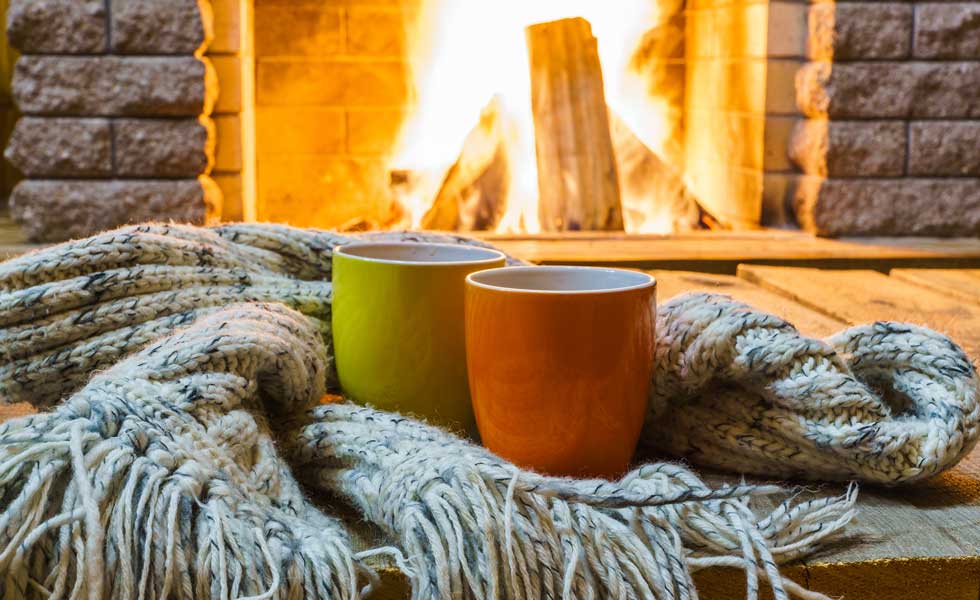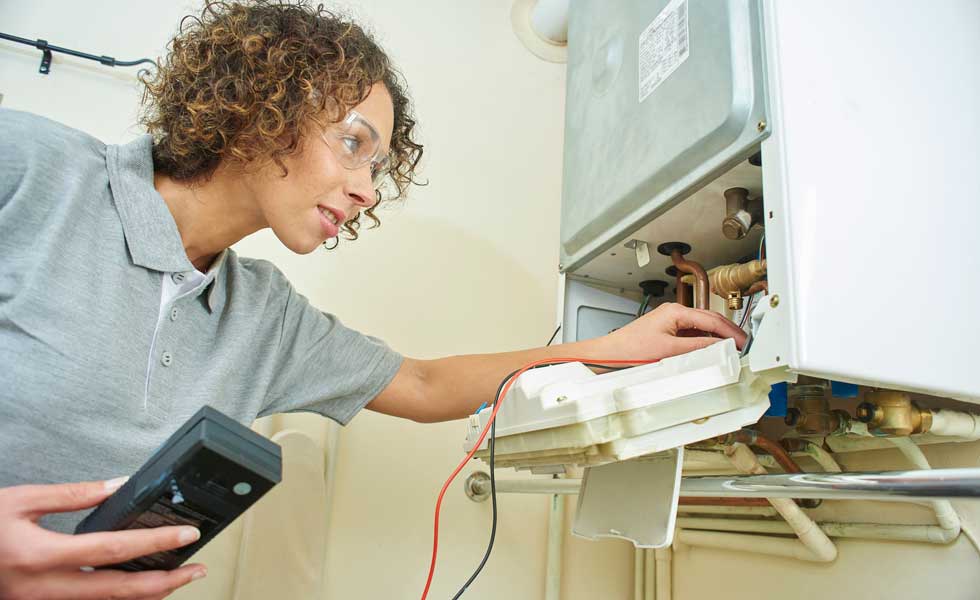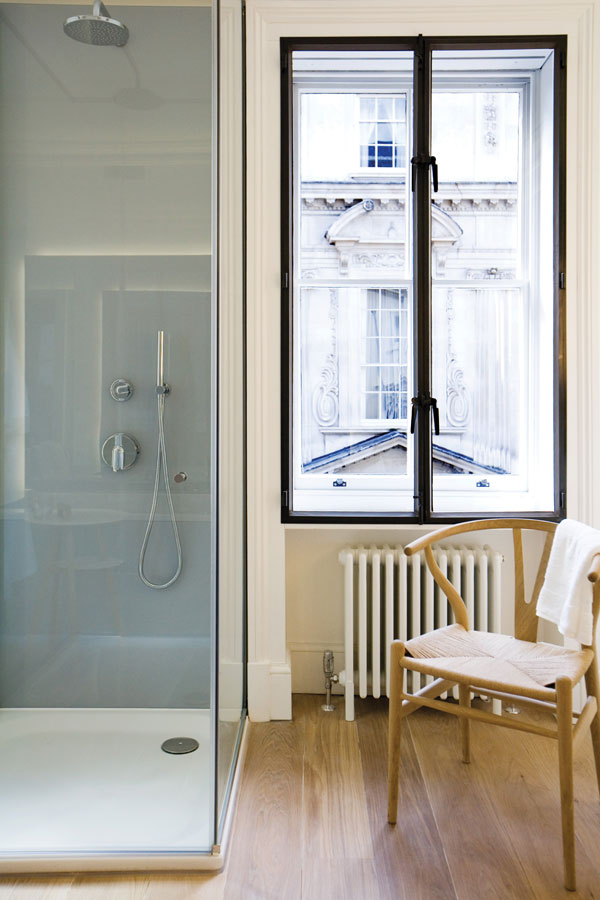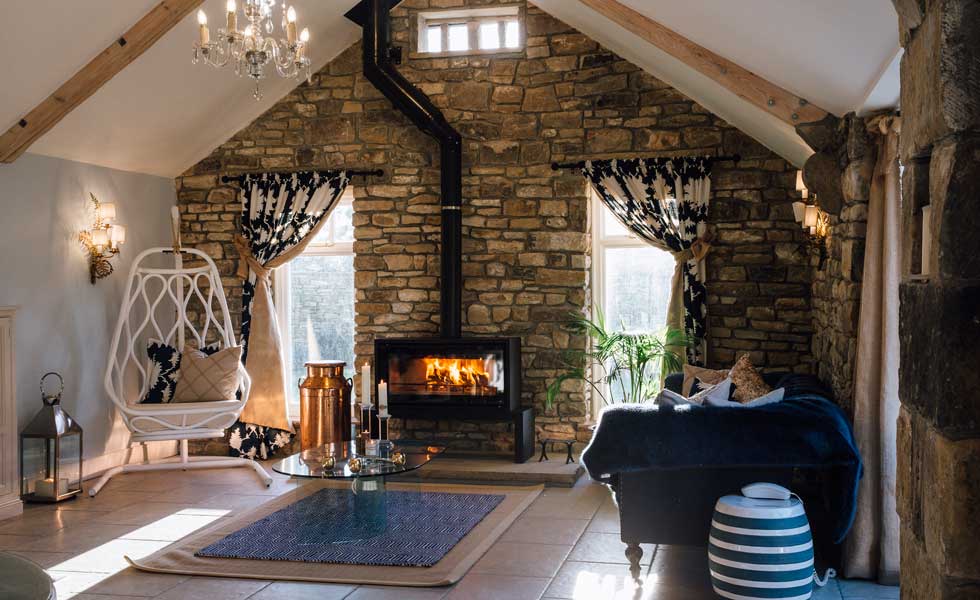15 Ways to Make Your Home Warmer
From quick-fix DIY tasks to longer term solutions, here are 15 ways to help make an old home more energy efficient this winter

As we come into the winter months and the temperature drops, we put more demands on our home to keep us warm. Ensuring your home is running at maximum efficiency will not only keep you comfortable throughout the season, but will also keep your fuel bills as low as possible.
Here are 15 measures you can take to make your home not only warmer, but also more efficient.

1. Assess Your Boiler and Balance Your Heating System
Make sure you get a qualified and experienced engineer to service your boiler on an annual basis. You should also make sure there is no air in the system (by bleeding your radiators), while adding an inhibitor can help break down rust and sludge which tends to build up in a radiator system; both tasks can be done on a DIY basis. “Then make sure the heating system is properly balanced so that heat reaches all areas of the property evenly,” adds energy efficiency expert David Hilton.
“The next improvement is to add zone control so that each room or area can be heated to different temperatures as required and the boiler turns off once the desired temperature is achieved [see point 3]. Wireless controls can be an easy way to add these measures to an existing property without much disruption.”
2. Look at Your EPC Rating
If you’ve bought your home recently, then the EPC rating certificate could be a starting point for the improvements you make. If you haven’t and you’re interested in finding out how energy efficient your home is, then you can still get an EPC report done.
As well as telling you the current energy rating of your property, it also highlights areas that you can improve, and gives an indication as to how much it’ll cost to do the work and how much you could save on your bills if you made changes. If you decide to make the energy efficient improvements detailed then you can get a new EPC done to include the changes. Only accredited domestic energy assessors can produce valid EPCs.
3. Zone Your Heating
“Thermostatic radiator valves (TRVs) allow you to heat just the space you want warm. This means you can program radiators individually, giving you control over the ones you want to heat and when. So, for example, at night during the winter, you may just want to keep bedrooms at a comfy 20°C but have the radiators off everywhere else. You can also pre-set TRVs to come on if the temperature dips in the room,” says Steve Birch, Sales Director of Vogue (UK).
(MORE: Beginner’s Guide to Heating Your Home)
4. Upgrade Your Radiators
“There’s no easy answer as to when you should update your radiators, but general practice recommends between 15 and 20 years. Larger radiators don’t always mean better efficiency. In fact, you could opt for a smaller model with a more powerful heat output,” begins Ellie Sawdy, brand leader at Bisque Radiators.
“One other thing to consider is pipework. Over the years we have seen gorgeous radiators spoiled by poor pipework connections, so we recommend discussing installation with your plumber as early as possible. Having this discussion early on in the process could affect the valves you choose to accompany your radiator, so it’s worth bearing in mind early on in the process.”
(MORE: Radiators Buying Guide)
5. Phase Change Materials
Thermal mass is useful for storing solar heat energy and in doing so, it helps prevent overheating. As a domestic building material it’s usually in the form of stone and masonry.
But there’s an alternative, says energy efficiency expert Tim Pullen: “Phase change material (PCM). Good phase change materials can store 14 times as much energy as concrete. But how does it work? PCM typically contains tiny pellets of a form wax (a solid), that melt (become a liquid) as they absorb heat and then release that heat as the ambient temperature falls; the pellets then solidify.”
6. Secondary Glazing

“Secondary glazing [as shown above] provides the ideal solution for projects where the existing windows need to remain intact but improved thermal efficiency is required. Double-glazed secondary glazing is now available, which can also help reduce sound transmission, which is often needed in properties situated in cities and towns. An improved level of security is also a prerequisite for many clients and secondary glazing can provide this, especially in an historic property,” says Jane Hindmarch of Architectural Bronze Casements.
7. Masonry Stoves
A masonry stove could be an energy efficient, sustainable and practical heating alternative to an open fireplace or gas-effect stove. Why? It’s all about thermal mass.
Thermal mass is the ability of a material to absorb and store heat and this is how masonry stoves work. Heat produced from the fire warms up the masonry around the heater. Because the masonry stores the heat – sometimes for up to 20+ hours depending on the design – it can continue to heat rooms well after the fire has burnt out.
8. Cavity Wall Insulation
“Injecting cavity walls with insulation is potentially one of the most cost-effective ways of boosting your home’s thermal efficiency. However, it needs to be done professionally. If it’s mis-applied there’s a risk of it causing damp problems. Some properties can’t be retro-insulated in this way, e.g. older walls with thin cavities, and modern timber frame walls. Walls exposed to severe weather or poorly maintained externally can also be problematic. The detail can be quite complex so it’s worth getting independent advice or consulting a detailed publication like the Haynes’ Home Insulation Manual,” says Ian Rock, Chartered Surveyor.
9. Avoid Building a Draughty Extension

“Because new extensions have to comply with demanding modern Building Regs standards for heat loss they should be significantly less cold and draughty than most existing houses,” says Ian Rock.
“For example, the reveals of window and door openings must be fitted with insulated cavity closers to prevent cold-bridging. Also, because new roofs and cavities are insulated there should be no path for cold to bridge across from outside to internal walls and floors. However, unlike new build homes there is no specific requirement for airtightness with extensions, so to reduce the risk of draughts it’s important to ensure that gaps are sealed where service pipes and cables enter the structure and that there are no gaps at windows and door frame edges etc.”
(MORE: All you need to know about building an extension)
10. Look at the Floors
It is possible to insulate existing concrete slabs, but it can be disruptive to do so. Another alternative is to use an insulating underlay such as Sempafloor.
(MORE: How to insulate a floor)
11. Call in an Energy Efficiency Expert
If you’re serious about giving your existing home a complete overhaul and hope to improve the energy efficiency as part of this project, then get an independent energy efficiency expert on board. They will be able to take a holistic view and suggest measures appropriate to the house, your budget and look at projected running costs vs the capital cost.
12. Inspect Your Flat Roof
“Many flat roofs are often poorly insulated, which means moist air from the rooms below will condense into water when it hits a cold surface, and lead to condensation,” begins Ian Rock.
“The main concern is that old decks are often in very poor condition and many were also originally built ‘too flat’. They should have a gentle slope of around 1:40 to ensure that rainwater can easily discharge and doesn’t sit in puddles on the surface. The best solution is normally to replace the deck, which may be rotten in places, and then build up an insulated ‘sandwich’ above it, with the new surface covering on top to create a modern well insulated ‘warm’ roof.”
(MORE: Surveying a flat roof)
13. Insulate Your Hot Water Pipes
Pipe lagging, as it’s known in the trade, is a way of insulating your hot water pipes to keep the heat in and avoid them bursting or freezing when a cold snap hits. The foam pipes are readily available in DIY stores, are reasonably priced and can be fitted over pipes with relative ease; a quick-fix DIY job.
14. Draughtproofing
Draughtproofing is also relatively cheap, readily available at DIY shops and easy to fit — a screwdriver and silicone gun are probably as complex as it gets.
Letterboxes, door frames and windows and loft hatches can all be made much more airtight with draught tape or seals or brush excluders. If you’ve a particularly draughty house, buy a £20 smoke pen and wander around the house following the smoke trail, paying close attention to skirting boards, floorboards and windows and doors, in order to identify the source of draughts.
15. Turn Down the Dial

And finally, and this might sound obvious but turning down the dial is really worth doing, especially with the expected savings on your yearly bills. Turn your thermostat down by one degree and save yourself around £80 per year* and switch your tumble dryer to an airer or washing line and save yourself around £35 a year.*
*Figures from The Energy Saving Trust. Savings for a typical three-bedroom semi-detached home, heated by gas. Figures are based on fuel prices as of April 2019
Bring your dream home to life with expert advice, how to guides and design inspiration. Sign up for our newsletter and get two free tickets to a Homebuilding & Renovating Show near you.
Michelle was Homebuilding & Renovating magazine's Deputy Editor. With an editorial career spanning more than 18 years, Michelle spent time working on educational magazines and websites until her career took an exciting turn into the world of homes and interiors. Working on sister titles Real Homes and Period Living, she then joined the Homebuilding team in November 2018.
She’s just completed her second kitchen renovation project and bathroom renovation, armed with an ever-growing knowledge of homebuilding advice and design inspo (and a Pinterest board or two, of course).

